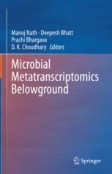Search
Search Results
-
Enhancement of Natural Control Function for Aphids by Intercrop** and Infochemical Releasers in Wheat Ecosystem
Wheat Triticum aestivum is the most important food crop in the world. In China, wheat is the second largest crop after rice in cultivated area, and...
-
Chemical Signal Dissemination Through Infochemicals
Every species has its own way of communication with diverse range of complexity that is relatively simplified in case of higher organisms while...
-
Aquatic chemical ecology meets ecotoxicology
Chemical ecology and ecotoxicology are research directions that emerged between the 1950s and 1970s following a rise in awareness for info- or...

-
Phylogeny and biogeography of the algal DMS-releasing enzyme in the global ocean
Phytoplankton produce the volatile dimethyl sulfide (DMS), an important infochemical mediating microbial interactions, which is also emitted to the...

-
Beyond 'push–pull': unraveling the ecological pleiotropy of plant volatile organic compounds for sustainable crop pest management
Plants produce an array of different volatile organic compounds (VOCs) that have diverse eco-physiological functions and agricultural applications....

-
Algal blooms in the ocean: hot spots for chemically mediated microbial interactions
The cycling of major nutrients in the ocean is affected by large-scale phytoplankton blooms, which are hot spots of microbial life. Diverse microbial...

-
Lipid mediators in marine diatoms
Diatoms are eukaryotic microalgae representing one of the major groups in the marine phytoplankton, accounting for up to 40% of annual productivity...

-
An Ocean of Signals: Intracellular and Extracellular Signaling in Diatoms
Diatoms are frequently exposed to diverse biotic and abiotic stressors, and they rely on sophisticated sensing mechanisms to perceive and respond...
-
Long-term continuous mismatch between grazing cues and real grazing losses causes attenuation of induced morphological defense in Scenedesmus
For the freshwater phytoplankton Scenedesmus , morphological defense induced by infochemicals released from grazers (such as Daphnia ) is considered to...

-
Foraging Behaviour
In this chapter, we consider practical aspects of the foraging behaviour of insect natural enemies in its widest sense (so wide that we even include...
-
Indirect effects of invasive and native predatory copepods (Mesocyclops pehpeiensis Hu and M. longisetus curvatus Dussart) on the population growth of brachionid rotifers
We quantified the effect of two cyclopoids, an invasive ( Mesocyclops pehpeiensis ) and a native ( Mesocyclops longisetus curvatus ) species on the...

-
Dimethyl sulfide mediates microbial predator–prey interactions between zooplankton and algae in the ocean
Phytoplankton are key components of the oceanic carbon and sulfur cycles
1 . During bloom events, some species can emit large amounts of the...
-
Transgenerational expression profiles of a sex related and an epigenetic control gene in the rotifer Brachionus plicatilis in relation to environmental predictability
A non-genetic transgenerational inhibitory effect on sexual reproduction has been demonstrated in Brachionus plicatilis in relation to environmental...

-
Chemical ecology of triatomines: current knowledge and implications for Chagas disease vector management
Triatomines (Hemiptera: Heteroptera: Reduviidae), commonly known as conenose or kissing bugs, includes species of outstanding medical importance...

-
Social influence on anti-predatory behaviors of juvenile bighead carp (Hypophthalmichthys nobilis) are influenced by conspecific experience and shoal composition
At early life stages invasive fishes may have no innate or learned behavioral responses to native predators. However, social cues expressed by shoal...

-
Functional Diversity of Infochemicals in Agri-Ecological Networks
The trophic info networks are ecological networks through which information flows from one trophic level to the other. They are like food webs, but...
-
An Overview of Fungal Volatile Organic Compounds (VOCs)
Fungi emit many volatile organic compounds (VOCs) as mixtures of low molecular mass alcohols, aldehydes, esters, terpenoids, thiols, and other small...
-
Interplant communication via hyphal networks
Plant are connected via hyphal networks which distribute nutrients, reduced carbon from photosynthesis as well as information within the plant...

